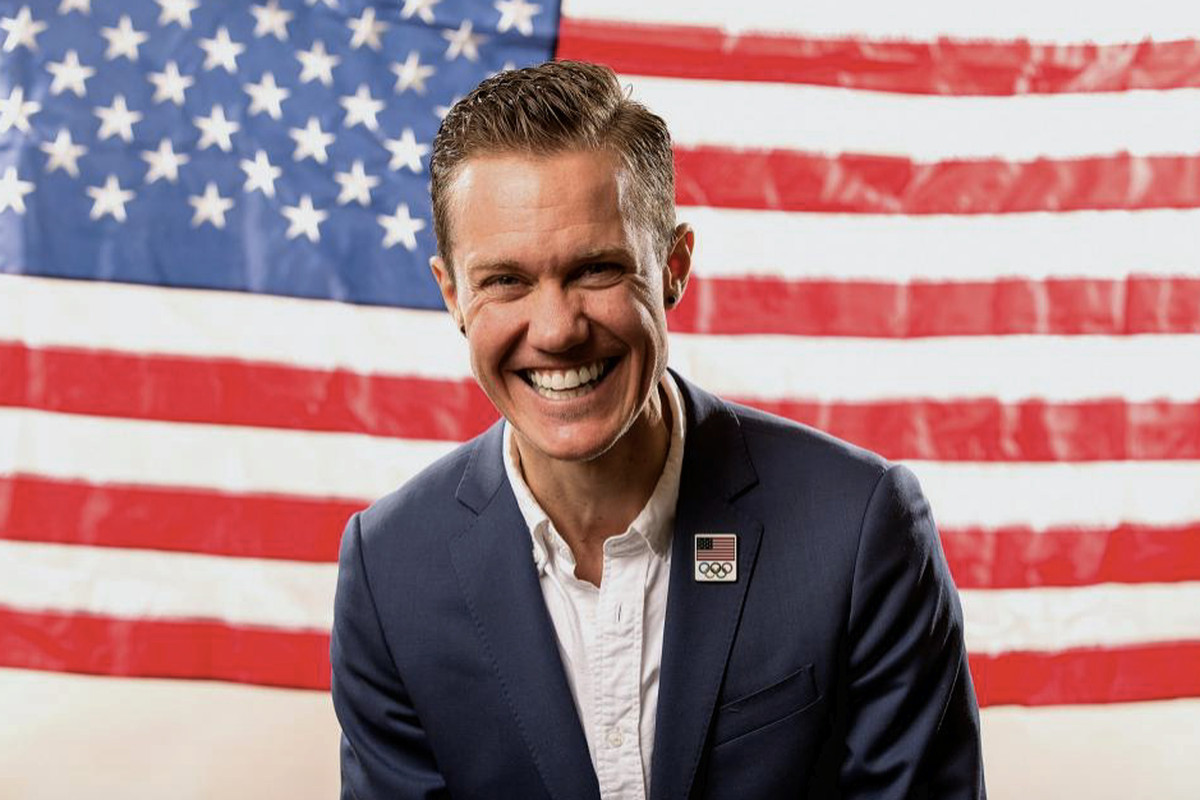On November 30, SLU students gathered in the conference hall of Eben Holden to hear Chris Mosier, nationally-ranked duathlete and triathlete, speak about his experiences as one of the first openly-transgender athletes to represent America on the international scale. The event was hosted by Spectrum, a student-run group working to provide a safer and more inclusive campus for LGBTQ students.
Mosier’s address was nothing short of heartfelt and sincere. Over the course of an hour and a half, he confidently told the audience about his lengthy pilgrimage to success, his advocacy for transgender rights, and his fight to change discriminatory policies in American sports leagues. He started off with one simple statement, “I am not here to represent all transgender people.”
Mosier began his story by recounting the first time he was chastised by others for being different: he was four years old. The athlete had been running with his brothers and friends, shirtless, when his aunt pulled him inside: “Girls can’t run around without a shirt on.”
Mosier went on to share many experiences that all shared the same tone. “Teachers kept telling me that the things I was interested in were wrong. That little girls didn’t ride skateboards, that little girls didn’t wear their hats backwards.” For the next twenty years, small actions and comments like these were horrible for Mosier, who was being told that who he fundamentally was as a person was wrong.
While Mosier has had many obstacles in his life, he has always found solace in sports. In high school, Mosier was a three-sport, All-Conference athlete. Though constantly bullied in the game, he could always rely on his teammates. “I found my community and friends through sport, because no matter how weird people thought I was off the court, they valued me because I was a great teammate, a great leader, and a great player.”
Mosier took a sabbatical from athletics in college to focus on his academic life, but following graduation, he found that he could relieve the emotional stress of pretending to be someone else through running. He trained everyday, and soon began to win more and more prestigious races.
For Mosier, completing marathons on the national level was one of the factors that pushed him to come out as transgender. “I became scared to tell people I had won because it had been in the women’s category.” He would soon be nationally-ranked, and he would make sure to do it as the man he always knew he was.
Throughout the many months of Mosier’s transitioning period, he began to feel more and more confident with himself as a runner and as a person. He started to bike and swim, allowing him to compete in duathlons and triathlons. Mosier soon became a nationally ranked athlete, yet by 2014 he was still unable to compete for Team USA.
At the time, national Olympic teams followed the International Olympic Policy, which stated that “transgender athletes need to have a full lower surgery in order to compete.” The day after winning the qualifiers for Team USA, Mosier hired a lawyer. “Not every transgender person wants to have an extra body part sewn onto them,” he said. “It’s a Human Rights violation to make someone do that in order to participate in a sport that they love.” With this perspective in mind, the rule was changed in January 2016. Mosier went on to compete for Team USA in the World Championship in Spain, where he was the second-fastest American man in his group.
After being named Outsports
Person of the Year, becoming the first transgender man featured in a Nike advertisement, and being showcased in ESPN Magazine’s “Body Issue,” 2016 proved to be the year that Chris Mosier truly became who he was meant to be.
Mosier now runs for Team USA and trains professionally, but his advocacy for transgender athletes is his most valued work. Mosier has helped many LGBTQ organizations to change laws stopping or discouraging transgender athletes from competing. On his website, TransAthlete, he lists the legal rights for transgender student athletes as well as clear terminology and advice for trans allies.
Through his profession, charity, and advocacy, Chris Mosier strives to have “transgender athletes,” be seen simply as “athletes.”
To learn more, follow Chris Mosier @thechrismosier, or go to his website: transathlete.com



